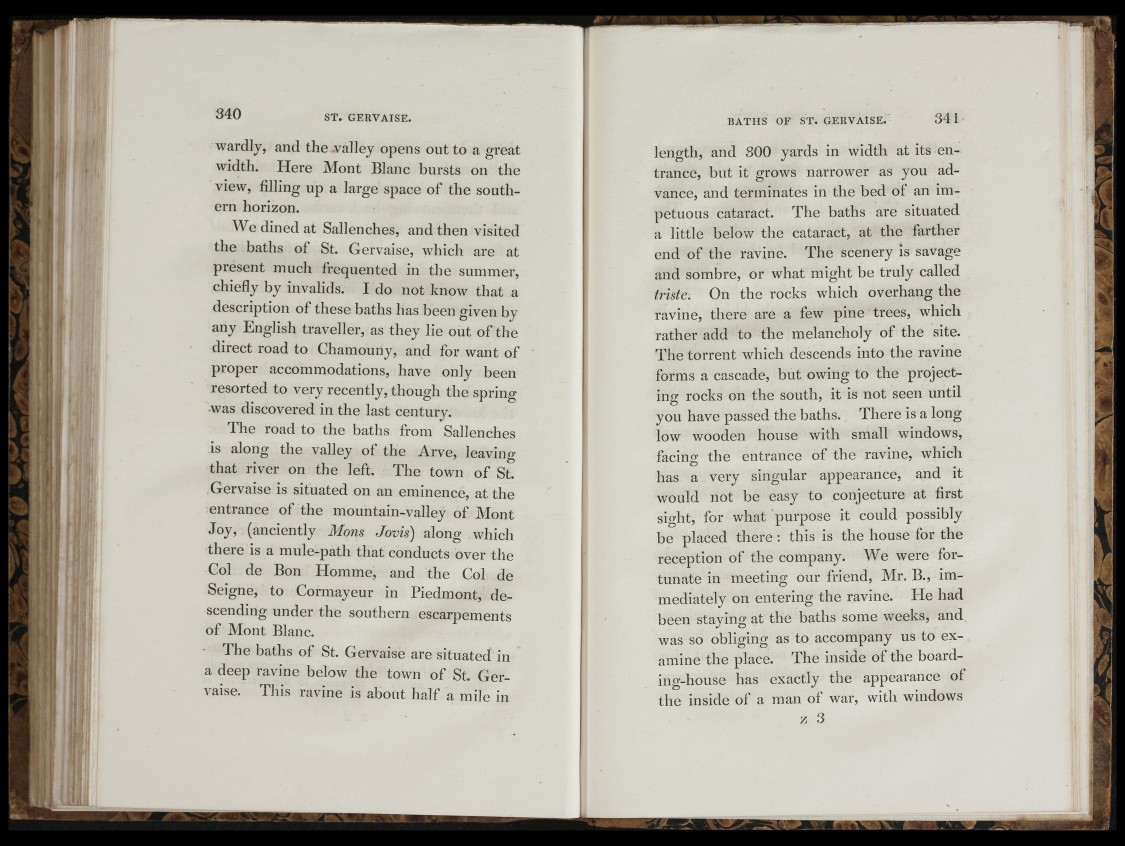
■1
r i
wardly, and the valley opens out to a great
width. Here Mont Blanc bursts on the
view, filling up a large space of the southern
horizon.
We dined at Sallenches, and then visited
the baths of St. Gervaise, which are at
present much frequented in the summer,
chiefly by invalids. I do not know that a
description of these baths has been given by
any English traveller, as they lie out of the
direct road to Chamouny, and for want of
proper accommodations, have only been
resorted to very recently, though the spring
was discovered in the last century.
I h e road to the baths from Sallenches
is along the valley of the Arve, leaving
that river on the left. The town of St.
Gervaise is situated on an eminence, at the
entrance of the mountain-valley of Mont
Joy, (anciently Mons Jovis) along which
there is a mule-path that conducts over the
Col de Bon Homme, and the Col de
Seigne, to Cormayeur in Piedmont, descending
under the southern escarpements
of Mont Blanc.
- The baths of St. Gervaise are situated in
a deep ravine below the town of St. Gervaise.
This ravine is about half a mile in
length, and 300 yards in width at its entrance,
but it grows narrower as you advance,
and terminates in the bed of an impetuous
cataract. The baths are situated
a little below the cataract, at the farther
end of the ravine. The scenery is savage
and sombre, or what might be truly called
triste. On the rocks which overhang the
ravine, there are a few pine trees, which
rather add to the melancholy of the site.
The torrent which descends into the ravine
forms a cascade, but owing to the projecting
rocks on the south, it is not seen until
you have passed the baths. There is a long
low wooden house with small windows,
facins: the entrance of the ravine, which
has a very singular appearance, and it
would not be easy to conjecture at first
sight, for what purpose it could possibly
be placed there : this is the house for the
reception of the company. We were fortunate
in meeting our friend, Mr. B., immediately
on entering the ravine. He had
been staying at the baths some weeks, and
was so obliging as to accompany us to examine
the place. The inside of the boarding
house has exactly the appearance of
the inside of a man of war, with windows
z 3
t 'I